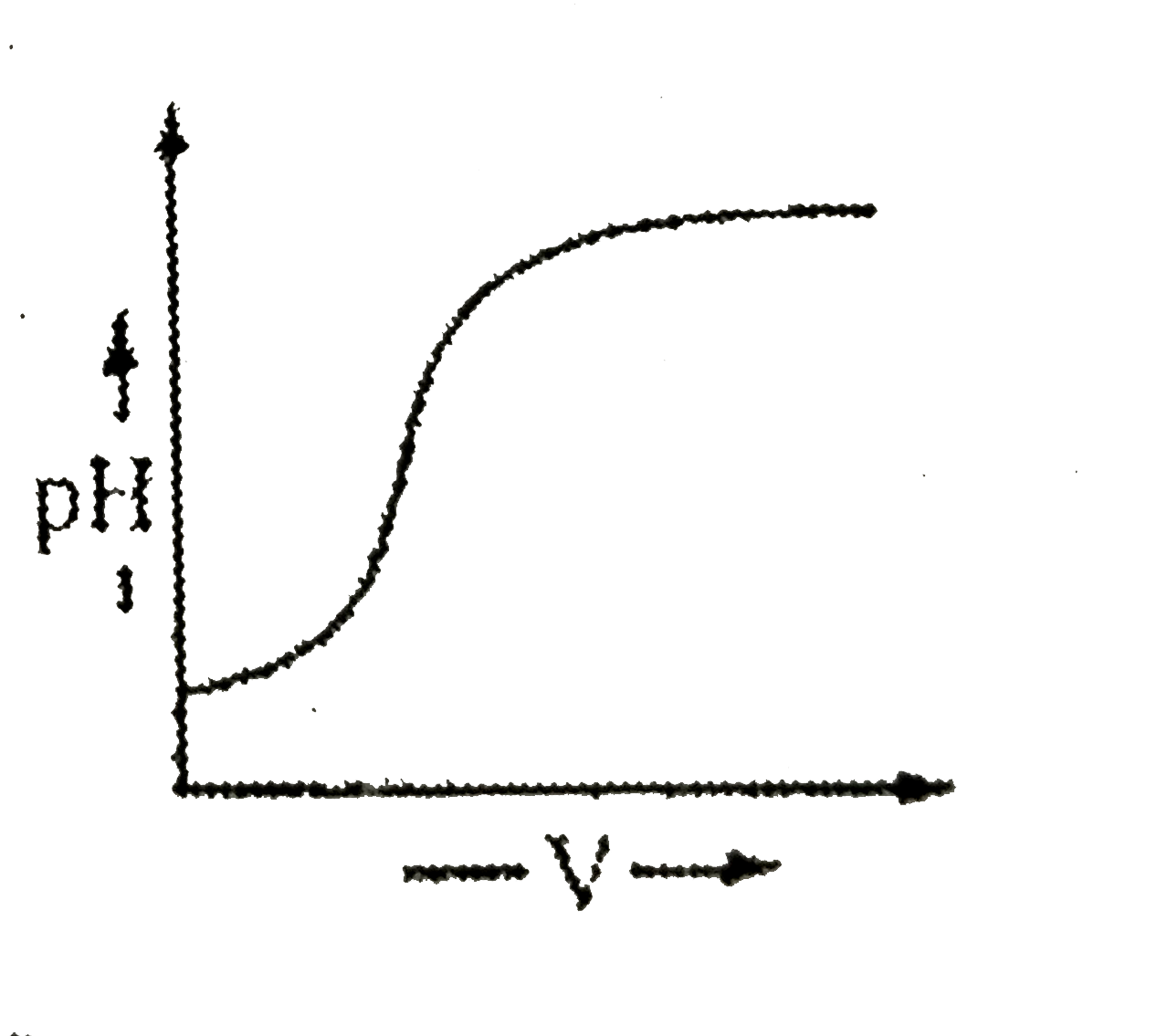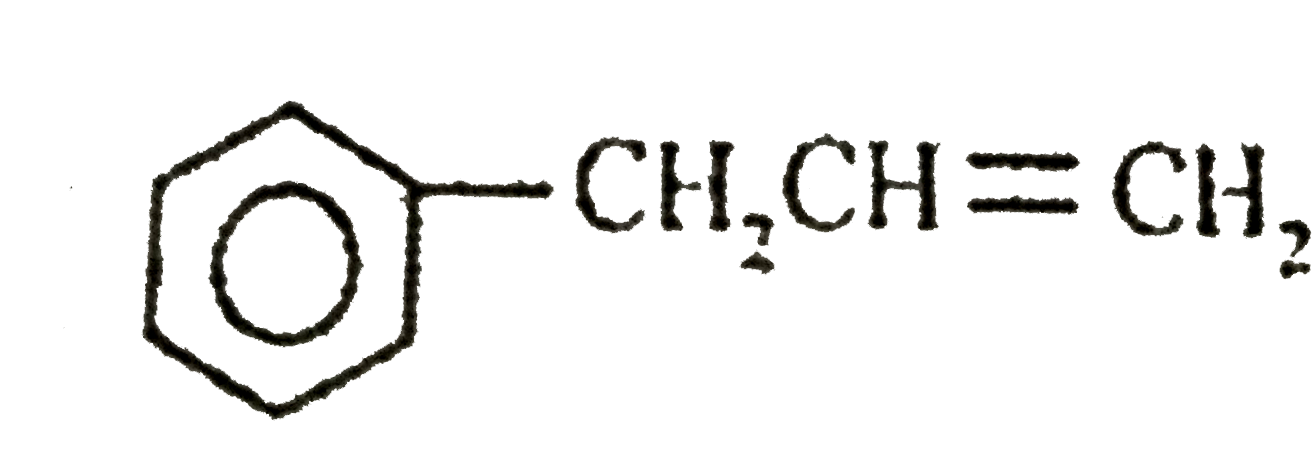Complete Solutions to CHEMISTRY of chapter AIIMS 2007 of Class 12 book with complete answers and questions
| Class 12 | CHEMISTRY |
| Chapter | AIIMS 2007 |
| AIIMS PREVIOUS YEARS | CHEMISTRY |
| Number Of Questions | 60 |
| Academic Year | 2023-24 |
in the following sequence of reactions what is `D`
 .
.
View SolutionThe coordination number in hcp is
View SolutionCyanogen gas is obtained in the reaction
View SolutionThe pH of the solution obtained on neutralisation of 40 mL 0.1 M NaOH with 40 ml 0.1 `M CH_(3)COOH` is
View SolutionInert gases are mixed in iodine vapours. Then there are _______ between them.
View SolutionBond length order is
View SolutionLargest difference in radii is found in case of the pair
View Solution1 mol each of the following compounds is dissolved in 1 L of solution. Which will have the largest `Delta T_(h)` value ?
View Solution`CH_(3)OC_(2)H_(5)` and `(CH_(3))_(3)COCH_(3)` are treated with hydroiodic acid. The fragments after reaction obtained are
View SolutionCarbon and CO gas are used to reduce which of the following pairs of metal oxides for extraction of metals ?
View SolutionWhich of the following will give `N_(2)` gas no treatment with nitrous acid `(NaNO_(2)+HCI)` ?
View SolutionX-rays are emitted during
View SolutionIn P versus V graph, the gorizontal line is found in which _______ exists.
View SolutionDuring estimation of nickel , we prepare nickel dimethylglyoxime, a scarlet red solid. This compound is _______.
View SolutionCritical temperatures for A, B, C and D gases are `25^(@)C, 10^(@)C, -80^(@)C` and `15^(@)C` respectively. Which gas will be liquefied more easily ?
View SolutionWhich of the following metal ions will form complexes with the same magnetic moment and geometry irrespective of the nature of ligands ?
View SolutionDuring titration of acetic acid with aq. NaOH solution, the neutralisation graph has a vertical line. This line indicates

View SolutionWhich of the following radioistopes is used as anticancerous ?
View Solution`XeF_(6)` on complete hydrolysis gives
View SolutionCalculate change in internal energy if `Delta H= - 92.2 kJ, P = 40` atm and `Delta V = - 11`.
View Solution`Delta H_("fusion")` of a substance is 'x' and `Delta H_("vap")` is 'y', then `Delta H_("sublimation")` will be
View SolutionDecay constant of a radioactive substance is `69.3 sec^(-1)`, find `t_(1//16)` of the same substance.
View SolutionThe repeating structural unit of silicone is
View SolutionPropene on hydroboration and oxidation produces
View Solution on mercuration and demercuration produces
on mercuration and demercuration produces
View Solution
The product obtained `is//are`
View SolutionThe element which is the most abundant in the earth crust is
View SolutionWavelength of red light is absorbed by the complex
View SolutionIn the change `[Cu(H_(2)O)_(6)]^(2+)overset(HCl)rarr [CuCl(H_(2)O)_(5)]^(+)`, the colour changes from
View SolutionBenzoic acid is treated with lithium aluminium hydribve. The compound obtained is
View SolutionChain transfer reagent is:
View SolutionAmong the following components of cement which is present in highest amount ?
View SolutionA catalyst
View SolutionWhich of the following does not contain a coordinate bond?
View SolutionWhich of the following species participate in sulphonation of benzene ring ?
View SolutionWhich of the following statement is true ?
View Solution`Delta S_("surr")` for an exothermic reaction is
View SolutionThe vapour pressure of pure benzene at a certain temperature is `0.850` bar. A non-volatile, non-electrolyte solid weighting `0.5 g` when added to `39.0 g` of benzene (molar mass `78 g mol^(-1)`). The vapour pressure of the solution then is `0.845` bar. What is the molar mass of the solid substance?
View SolutionWhich of the following is optically inactive ?
View SolutionWhich statement is true for ferrocene ?
View SolutionAssertion : Copper sulphate solution is not stored in zinc vessel.
Reason : Zinc forms complex with `CuSO_(4)`.
View SolutionAssertion : Benzene diazonium salt on boiling with water forms phenol.
Reason : C - N bond is polar.
View SolutionAssertion : trans-butene on reaction with bromine forms recemic mixture.
Reason : trans-compound in trans addition forms two types of stereoisomers.
View SolutionAssertion : Ozone is an allotrope of oxygen.
Reason : Oxygen is bluish colour liquid and in singlet state it is more paramagnetic.
View SolutionAssertion (A) : ` SnI_4` is an orange solid .
Reason (R) : The colour arises due to charge transfer .
View SolutionAssertion: Acetamide has more polar`gt C = 0` group than ethyl acetoacetate.
Reason : `ddot NH_(2)` is more electron donating than `OC_(2)H_(5)`
View SolutionAssertion : Magnetic moment of Dy is the highest among langthanoids.
Reason : Orbital motion contributes magnetic moment.
View SolutionAssertion : C - O bond in metal carbonyl is long.
Reason : There is delocalisation of electrons from filled d orbitals into the empty orbitals on the CO ligands.
View SolutionAssertion : Chloral reacts with phenyl chloride to form DDT.
Reason : It is an electrophilic substitution reaction.
View SolutionAssertion : Mixture of `CH_(3)COOH` and `CH_(3)COONH_(4)` is an example of acidic buffer.
Reason : Acidic buffer contains equimolar mixture of weak acid and its salt with weak base.
View SolutionAssertion : Alkyl iodide can be prepared by treating alkyl chloride/bromide with Nal in acetone .
Reason : NaCI/NaBr are soluble in acetone while Nal is not .
View SolutionAssertion: `F` is more electronegative than `Cl`.
Reason: `F` has high electron affinity than `Cl`.
View SolutionAssertion : Asetylene on reacting with sodamide gives sodium acetylide and ammonia.
Reason : ap hybridised carbon atoms of acetylene are considerably electronegative .
View SolutionAssertion(A) : When sodium chloride dissolves in water, then `Na^(+)` and `Cl^(-)` ions leaving the crystal lattice acquire far greater freedon.
Reason(R ) : In thermodynamic terms, the formation of solution occurs with a favourable change in energy i.e., `DeltaH` has a high positive value and `TDeltaS` has a low negative value.
View SolutionAssertion `:` Alpha`(alpha)-` amino acids exist as internal salt in solution as they have amino and carboxylic acid groups in near vicinity.
Reason`:H^(+)` ion given by carboyxylic group `(-COOH)` is captured by amino group `(-NH_(2))` having lone pair of electrons.
View SolutionAssertion : The kinetics of the reaction -
`mA + nB + pC rarr m'X + n'Y + p'Z` obeys the rate expression as -
`(dx)/(dt) = k[A]^(m) [B]^(n)`
Reason : The rate of reaction does not depend upon the concentration of C.
View SolutionAssertion : Nitrogen is less reactive than molecular oxygen.
Reason: Bond length of `N_(2)` is shorter than that of oxygen.
View SolutionAssertion : The lactic acid shows the geometrical isomerism.
Reason : Lactic acid has carbon-carbon double bond .
View SolutionAssertion (A) : The equilibrium constant is fixed and characteristic for any given chemical reaction at a specified temperature.
Reason (R) : The composition of the final equilibrium mixture at a particular temperature depends upon the starting amount of reactants.
View Solution(A) The position of an element in periodic table after emission of one `alpha` and two `beta`-partilce remians unchanged.
(R ) Emission of one `alpha` and two `beta` particles gives isotope of the parent element which acquires same position in the periodic table.
View Solution
CHEMISTRY questions and complete solutions for chapter AIIMS 2007 of AIIMS PREVIOUS YEAR PAPERS of Class 12